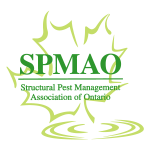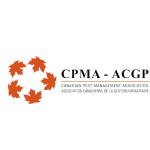The Structural extermination class contains a number of individual licenses. All sorts of different chemicals are used for different purposes and each grouping of chemicals and purposes is separated into specific licenses. This includes
If you are looking for an exciting career in pest control, make sure to read our posts on Pest Control Jobs!
The Fumigation, General, Soil and Commodity Licenses and the fumigation vault: This is for fumigating an object. It could be anything, a car, a sofa, a refrigerator or even a shed or detached garage. This license allows you to lock the item in what is called a vault which can be anything from a fully covering tarp to an enclosed space like a basement or shipping container. The exterminator can then use fumigant gases, not pesticide sprays but direct inflation of gas in the area to exterminate the pest that has infested it. Other licenses in the fumigation class can fumigate whole houses and even large buildings, air crafts and other large machines for pest issues. The general chemicals used include Carbon Dioxide and Chloropicrin, both of which are restricted from the structural exterminator’s license.
The other three licenses in the structural class are Greenhouse interior fumigation. This allows the exterminator to treat pests of plants that are indoors in pots or greenhouses. This is because they are separate from the actual ecology of Ontario and will not infiltrate the water table if incorrectly used. This class also has access to fumigants. There is also a specific license just for fumigation of termites as the process can be very dangerous to the environment and requires vaulting entire homes.
The last license under the structural class is the structural license. This is the license most people are aware of and the person you call when you have cockroaches. They use non-fumigant chemicals and sprays to deal with pests that are common to residential homes and businesses. They can deal with cockroaches and other crawling insects, flies and moths, even rodents using commercial grade rodenticide. While rodenticide does not require a license to use it is included in the structural exterminators licensing. While structural exterminators have access to certain fumigants and are able to perform a termite treatment the cost is very high and most companies prefer to focus on spray rather than fumigation.
If you are interested in becoming a licensed exterminator then you should first seek out experience. Find a position as a trainee or technician and work with exterminators when you can. They will teach you a great deal about pesticides, much of which you would not be able to learn just from reading the textbooks. When you feel ready you can apply to the ministry of the environment to do the exam, they will have Guelph university send you two textbooks, a core textbook and a textbook focused on your license category. Study them very well and then do the two exams, the core is closed book but the license specific exam is open book. When you have completed the exams you will receive a letter you can take to the ministry to get your licenses. At that point, you will be a fully licensed structural exterminator.






